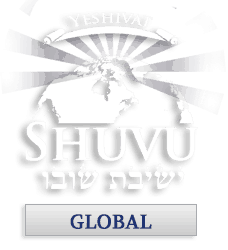וַיְדַבֵּ֣ר יְהֹוָ֔ה אֶל־משֶׁ֥ה וְאֶל־אַֽהֲרֹ֖ן לֵאמֹֽר: זֹ֚את חֻקַּ֣ת הַתּוֹרָ֔ה אֲשֶׁר־צִוָּ֥ה יְהֹוָ֖ה לֵאמֹ֑ר דַּבֵּ֣ר | אֶל־בְּנֵ֣י יִשְׂרָאֵ֗ל וְיִקְח֣וּ אֵלֶ֩יךָ֩ פָרָ֨ה אֲדֻמָּ֜ה תְּמִימָ֗ה אֲשֶׁ֤ר אֵֽין־בָּהּ֙ מ֔וּם אֲשֶׁ֛ר לֹֽא־עָלָ֥ה עָלֶ֖יהָ עֹֽל:
The Lord spoke to Moses and Aaron, saying: This is the statute of the Torah which the Lord commanded, saying, Speak to the children of Israel and have them take for you a perfectly red unblemished cow, upon which no yoke was laid.
Exodus 19:1-2
This week is another special Shabbat as we approach Pesach. It is Shabbat Parah, the Sabbath of the red heifer. For ages, rabbis have debated the question, why a red heifer? Of all of the chukim, commandments that Hashem does not explain, this particular chok is the most enigmatic. Hashem tells us we are to use a red heifer for this ritual and does not explain why, we are simply to use a red heifer.
The ceremony of the Parah is the single highest ceremony depicted in Torah that allows us to make things, and people, tahara. Even the most unclean things, if they can be made clean at all, can be made clean using the ashes of the red heifer. The ashes created in the ceremony are mixed with water and then sprinkled on the unclean, or contaminated, to make it clean, or decontaminated. The waters of the ashes of the red heifer may be diluted indefinitely.
Even if a person has come into contact with the dead body, through the use of the ashes of the red heifer, he may be decontaminated. The area for the resting of the Mishkan, or the building of the Temple, must be decontaminated through the use of the waters of the ashes of the red heifer. Waters of the ashes of the red heifer must be created prior to the rebuilding of the Temple today.
It is interesting to note that the people involved in the creation of the waters of the ashes of the red heifer all become contaminated during the process of the creation of the waters. Those that create that which establishes ritual cleanness, all become ritually unclean during the ritual. The ritual utilizes cedarwood, hyssop, and a thread died tola’at (scarlet.)
One of the things illustrated by the ceremony of the Parah is the idea that contamination and sin are two completely separate issues. The people involved in the creation of the waters of the ashes of the red heifer have not sinned. They do, however, become contaminated. Becoming contaminated, though not desirable, is simply an occurrence during the living of life. One goes through the necessary steps to become decontaminated because being contaminated is not a state in which one wants to exist longer than necessary. Therefore, there is nothing sinful about becoming contaminated. When this occurs, one simply goes through the necessary steps for decontamination, and one gets on with life. Shabbat shalom.
